At the age of 79, Newfoundland master wooden boat builder Henry Vokey decided to build one last schooner. He finished her and she was launched this summer, a few months after his 82nd birthday. CBC’s Land & Sea has produced a wonderful twenty minute feature on Henry Vokey and the Leah Caroline, the two masted 44 foot long schooner that will be his legacy.
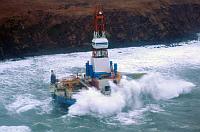 The plan was to move Shell’s two drilling rigs from Alaska to Seattle Washington for maintenance and repair. Shell’s tax bill, however, may have also played a role in the timing of the move. Things have definitely not gone according to plan. The drilling ship Noble Discover is still tied up in Seward, Alaska and the drill rig Kulluk is hard aground near Kodiak Island. As reported by the Alaska Dispatch:
The plan was to move Shell’s two drilling rigs from Alaska to Seattle Washington for maintenance and repair. Shell’s tax bill, however, may have also played a role in the timing of the move. Things have definitely not gone according to plan. The drilling ship Noble Discover is still tied up in Seward, Alaska and the drill rig Kulluk is hard aground near Kodiak Island. As reported by the Alaska Dispatch:
Shell hoped to save millions in taxes by moving now-grounded drill rig out of Alaska
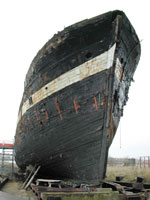
The composite clipper ship is still in Scotland but her rudder is in Australia
The rudder for the composite clipper ship, City of Adelaide, arrived in Australia the week before Christmas Typically, when a ship comes into port, the rudder arrives last. Very little has been typical, however, about the struggle to save the oldest composite clipper ship, the City of Adelaide, built in 1864.
City of Adelaide: Export row rudder arrives in Australia
Last August, we posted about news reports that the ship, which has been sitting on a Scottish slipway since 1992, had been fumigated and was waiting on a barge to take her to Rotterdam, where she would be loaded onto a container ship for her return trip to Australia. Her scheduled departure was October of 2012. The ship had previously been expected to depart the prior March, but was delayed. It turned out that virtually nothing in the news story that we posted about turned out to be accurate. As Alan Mackie was kind enough to point out to us in his comments to the post, the ship had not been fumigated and had not been loaded on a barge.
 A new review of “Hell Around the Horn” by Lars Walker at Brandywine Books:
A new review of “Hell Around the Horn” by Lars Walker at Brandywine Books:
“Among the many pleasures of the reading life, one of the rarest is the unassuming but excellent novel. That was what I found, to my delight, in Hell Around the Horn, by Rick Spilman.”
Click here to read the rest of the review.
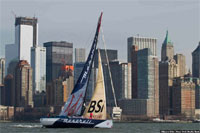 Last May, we posted about Giovanni Soldini and the Maserati Sailing Team’s attempt to break the monohull sailing record from the Ambrose Lighthouse in New York to Lizard Point off the south west coast of England. That attempt was stymied by light winds. On New Year’s Eve, Soldini and his eight man Maserati crew slipped their moorings in New York’s North Cove and quietly embarked on an attempt to break the record for sailing the 13,225 nautical miles between New York and San Francisco. In 1854, the clipper ship, Flying Cloud, reached San Francisco in 89 days and 21 hours, setting a record that stood for more than 130 years. The current record was set in 1998 by Yves Parlier sailing Aquitaine Innovations, sailing from New York to San Francisco by way of Cape Horn in 57 days, 3 hours, 2 minutes.
Last May, we posted about Giovanni Soldini and the Maserati Sailing Team’s attempt to break the monohull sailing record from the Ambrose Lighthouse in New York to Lizard Point off the south west coast of England. That attempt was stymied by light winds. On New Year’s Eve, Soldini and his eight man Maserati crew slipped their moorings in New York’s North Cove and quietly embarked on an attempt to break the record for sailing the 13,225 nautical miles between New York and San Francisco. In 1854, the clipper ship, Flying Cloud, reached San Francisco in 89 days and 21 hours, setting a record that stood for more than 130 years. The current record was set in 1998 by Yves Parlier sailing Aquitaine Innovations, sailing from New York to San Francisco by way of Cape Horn in 57 days, 3 hours, 2 minutes.
Soldini’s Maserati crew leave New York before the ball drops
So far, the Shell Oil drilling rig Kulluk is reported to have remained intact with no observed leaks of diesel fuel, lube or hydraulic oil, after grounding on Alaska’s Sitkalidak Island on Monday night. The video below was taken yesterday by Coast Guard Petty Officer 1st Class Sara Francis from a Coast Guard MH-60 Jayhawk helicopter. The weather conditions were reported to be 40 mph winds and 20 foot seas.
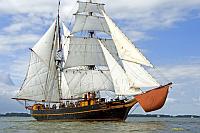
Photo: Hajo Olij
The Dutch merchant sailing ship, Tres Hombres, rescued a 70 year old German sailor who had been adrift in the Atlantic for two weeks after the rudder broke on his sailboat, Fidel. The German sailor was exhausted and dehydrated and was incapable of taking the tow line, so one of the Tres Hombres‘ fifteen member crew swam the line across to the disable sailboat. Tres Hombres took the sailboat under tow bound for Barbados and should arrive in a day or two. As the Tres Hombres has no engine, it is serving as a very unusual tugboat. The German sailor asked Tres Hombres’ Captain Van der Veen what the cost would be for the tow. Captain Van der Veen is reported to have replied that, “a beer in the Caribbean would be sufficient.” To read more, read the ship’s log:
Tres Hombres saves rudderless sailing on the Atlantic ocean by Leo trainee
The 32 meter brigantine Tres Hombres, in service since December 2009, maintains a sustainable freight service between: Europe, the Atlantic islands, the Caribbean and America. In addition to a 35 ton cargo capacity, she has accommodations for 5 crew members and 10 trainees / passengers.
See also: Carrier rescues exhausted German
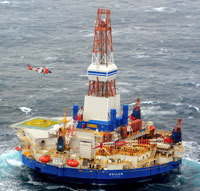
Photo: Petty Officer 1St Class Sara Francis/United States Coast Guard, via Associated Press
On Monday night, the Shell Oil drilling rig, the Kulluk, broke free from its towlines during heavy weather and ran aground on the east coast of Sitkalidak Island in the Gulf of Alaska. Sitkalidak Island is an uninhabited island separated by the Sitkalidak Strait from Kodiak Island to the west. The rig has approximately 3,600 barrels of diesel fuel, lube oil and hydraulic fluid aboard. Thus far, there are no reports of oil leaks from the grounded rig. The Kulluk is one of two rigs that Shell is using to drill test wells off the North Slope of Alaska as part of the company’s ambitious and expensive effort to open Arctic waters to oil production.
Seas are expected to be up to 33 feet by Tuesday, with the potential for 40-foot waves as a large storm system delivers moisture from as far south as California. Satellite imagery shows the bulk of the storm headed right for Kodiak.
From time to time, it is worth being reminded just how difficult it is to pilot a helicopter over wind and waves. Despite signs warning of dangerous conditions, a swimmer got into trouble in the ocean off Rio de Janeiro ‘s popular Copacabana Beach. A rescue helicopter was dispatched to assist the swimmer in distress, only to crash due to an unspecified mechanical failure, just offshore from where hundreds frolicked in the surf or walked the beach, One beach-goer captured the crash on video on his cell phone. Fortunately, the four aboard the helicopter all escaped without serious injury, as did the swimmer in distress who was picked up by a surfer. Thanks to Alaric Bond for passing along the news.
While hundreds of thousands shiver waiting for the ball to drop in TImes Square, a few miles away at the Pratt Institute in Brooklyn, a small but likely warmer crowd gathers to hear Chief Engineer Conrad Mister blow his collection of steam whistles to welcome in the New Year. A video of last year’s event:
[embed width=”560″]http://youtu.be/ze8nc0SaldA[/embed]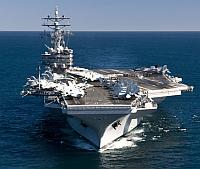
Photo: Kevin B. Gray
The impact of the meltdown of nuclear reactors at the Fukishima Daiichi power plant, hit by the following the Tōhoku earthquake and tsunami on 11 March 2011, is still unfolding. Last month it was revealed that fish caught near the crippled power plant were measured to have radiation levels 100 times above normal. The levels found ranged from 4,400 Becquerels per kg to 11,400 Bequerels per kg, against the maximum “safe” level of 100 Bequerels per kg.
This week eight sailors from the US aircraft carrier Ronald Reagan sued Tokyo Electric Power Co. The sailors claim that they were exposed to unacceptably high levels of radiation during disaster relief operations and that the utility lied about the dangers.
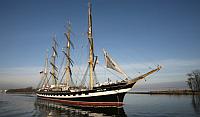 For a handful of ships, the great age of sail has not yet ended. In 2013, the Russian Navy sail training ship Kruzenshtern will call in 20 seaports in 11 countries and will take part in several international regattas. The ship, originally built in 1926 in Bremerhaven, Germany as the Padua is one of four surviving Laeisz Flying P liners and the last actively sailing. The Kruzenshtern, a four masted barque, is the second oldest windjammer still actively sailing, second only to the Russian sail training ship Sedov, built in 1921 as the Magdalene Vinnen II.
For a handful of ships, the great age of sail has not yet ended. In 2013, the Russian Navy sail training ship Kruzenshtern will call in 20 seaports in 11 countries and will take part in several international regattas. The ship, originally built in 1926 in Bremerhaven, Germany as the Padua is one of four surviving Laeisz Flying P liners and the last actively sailing. The Kruzenshtern, a four masted barque, is the second oldest windjammer still actively sailing, second only to the Russian sail training ship Sedov, built in 1921 as the Magdalene Vinnen II.
Tall ship Kruzenstern destinations for 2013
The other surviving Flying P liners are the Pommern; a museum ship in Mariehamn, Finland; the Peking, a museum ship in New York City’s South Street Seaport and the Passat, a museum ship in Lübeck’s sea resort of Travemünde, Germany.

Photo:SIMON BOTTOMLEY
In December we posted about NOAA’s Arctic Report Card 2012, which showed record low ice and snowfall in the Arctic. Nevertheless, some have pointed to the recent growth of Antarctic ice to suggest that climate change may not be a dramatic as feared. Nevertheless, a recent study by researchers from Ohio State University and other institutions, published in Nature Geoscience, has found that the Antarctic is warming at twice the rate previously predicted. Melting of Antarctic ice could significantly increase the rise of the sea levels around the world.
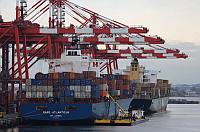
Photo:Librado Romero/The New York Times
Update: The port strike has been averted for now with a 30 day contract extension.
In early December we posted about the end of the eight day West Coast dock strike that shut down 10 of the port’s 14 container terminals in the port of Los Angeles/Long Beach, in one of the busiest traffic seasons of the year. Now the US is facing another dock strike, this time on the East and Gulf coasts, which could shut down 15 ports from Massachusetts to Texas. If an agreement is not reached between the International Longshoremen’s Association (ILA) and the ports by December 30th, the US could face its first coastwide strike since 1977.
While the media has focused on the upcoming “fiscal cliff,” the impact of tax and budget negotiations in Washington, the shutting down of containerized cargo on the East and Gulf coasts could be a “container cliff” with a major impact on the US economy.
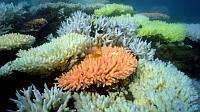
Photo:AFP
The world did not end of on 12/21/12 as some had predicted. Nevertheless, there are still a few things to worry about. Last week, marine geologists from Australia’s James Cook University warned that a one cubic kilometer slab of the sea floor on the Barrier Reef may be on the verge of collapsing. The slab, the remains of an ancient underwater landslide, is in danger of slipping off the continental shelf. If is does so, it may cause a tsunami. Of course, the researchers cannot say if the slab will slide off tomorrow or within the next century.
Slab of Barrier Reef sea floor collapsing, could cause tsunami, say scientists
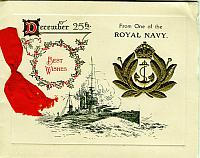 The custom of sending Christmas card is said to have originated in 1843 with Sir Henry Cole, a civil servant, who wanted to promote the new ‘Public Post Office.’ He arranged for his artist friend, John Horsley to design a card. Two batches totaling 2,050 cards were printed and sold that year for a shilling each. Royal Naval Christmas cards were not far behind. John MacFarlane in Nauticapedia has a fine selection of Christmas cards from Royal Navy ships. He writes:
The custom of sending Christmas card is said to have originated in 1843 with Sir Henry Cole, a civil servant, who wanted to promote the new ‘Public Post Office.’ He arranged for his artist friend, John Horsley to design a card. Two batches totaling 2,050 cards were printed and sold that year for a shilling each. Royal Naval Christmas cards were not far behind. John MacFarlane in Nauticapedia has a fine selection of Christmas cards from Royal Navy ships. He writes:
The sending of Christmas cards to express seasonal greetings is a relatively new tradition but naval personnel have been sending these cards for more than 100 years. Many ships of the Royal Navy and commonwealth navies produced custom designed cards to reflect their ship’s identity.
 We recently learned that good Saint Nicholas, long associated with Christmas and gift-giving, is also the patron saint of ships and sailors. The St. Nicholas Center notes: “Many ports, most notably in Greece, have icons of Nicholas, surrounded by ex-votos of small ships made of silver or carved of wood. Sailors returning safely from sea, place these in gratitude to St. Nicholas for protection received. In some places sailors, instead of wishing one another luck, say, “May St. Nicholas hold the tiller.”
We recently learned that good Saint Nicholas, long associated with Christmas and gift-giving, is also the patron saint of ships and sailors. The St. Nicholas Center notes: “Many ports, most notably in Greece, have icons of Nicholas, surrounded by ex-votos of small ships made of silver or carved of wood. Sailors returning safely from sea, place these in gratitude to St. Nicholas for protection received. In some places sailors, instead of wishing one another luck, say, “May St. Nicholas hold the tiller.”
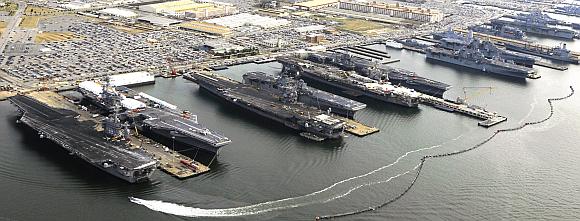 The Defense News blog Intercepts recently posted a photo of nine “flattops” home for Christmas at Norfolk naval base. Of the nine, five are aircraft carriers – the DWIGHT D. EISENHOWER, GEORGE H. W. BUSH, ENTERPRISE, ABRAHAM LINCOLN, and HARRY S TRUMAN. The other four are the amphibious assault ships – BATAAN, WASP, KEARSARGE, and IWO JIMA. The amphibious landing platform dock NEW YORK and a T-AKE dry cargo ammunition ship are also in port as are a number of smaller cruisers and submarines. The Navy makes a point of trying to gives its shipboard crews a chance to spend Christmas with their families.
The Defense News blog Intercepts recently posted a photo of nine “flattops” home for Christmas at Norfolk naval base. Of the nine, five are aircraft carriers – the DWIGHT D. EISENHOWER, GEORGE H. W. BUSH, ENTERPRISE, ABRAHAM LINCOLN, and HARRY S TRUMAN. The other four are the amphibious assault ships – BATAAN, WASP, KEARSARGE, and IWO JIMA. The amphibious landing platform dock NEW YORK and a T-AKE dry cargo ammunition ship are also in port as are a number of smaller cruisers and submarines. The Navy makes a point of trying to gives its shipboard crews a chance to spend Christmas with their families.
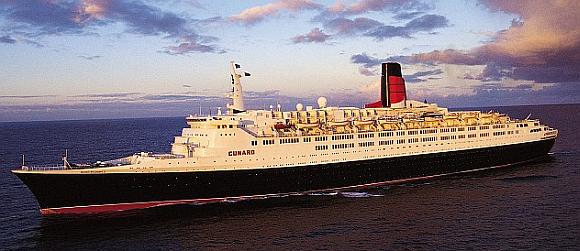 The MS Queen Elizabeth 2, which was purchased back in 2008 for conversion to a luxury hotel in Dubai, has reportedly been sold for scrap to Chinese interests for £20 million. The original conversion plans were scuttled by a credit crunch in Dubai shortly after the ship purchase. Last July we posted about a more modest hotel conversion plan for the QE2, which has now also fallen through.
The MS Queen Elizabeth 2, which was purchased back in 2008 for conversion to a luxury hotel in Dubai, has reportedly been sold for scrap to Chinese interests for £20 million. The original conversion plans were scuttled by a credit crunch in Dubai shortly after the ship purchase. Last July we posted about a more modest hotel conversion plan for the QE2, which has now also fallen through.
End of an era for the QE2: Iconic cruise liner sold as scrap to Chinese for £20m
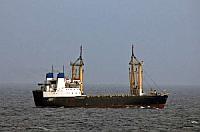
MV Iceberg 1
Wonderful news. Forces of Somalia’s semiautonomous Puntland region are reported to have raided the MV Iceberg I on Sunday and to have rescued 22 officers and crew who had been held hostage by Somali pirates for 33 months. The Puntland forces had laid siege to the ship for close to two weeks near the coastal village of Gara’ad in Mudung region. As we posted last October, the Panamanian-flagged ro/ro MV Iceburg 1 was hijacked by pirates about 10 nautical miles off the port of Aden, Yemen on March 29, 2010. Her crew of 24, of which 22 are believed to have survived, have been held hostage for 29 months. The ship’s owner Dubai-based Azal Shipping & Cargo has been accused of effectively abandoning the ship and her crew. One of the crew members, Wagdi Akram, committed suicide on October 27, 2010 by jumping overboard. The ship’s chief engineer is believed to have been killed by the pirates in March or June of 2011.
